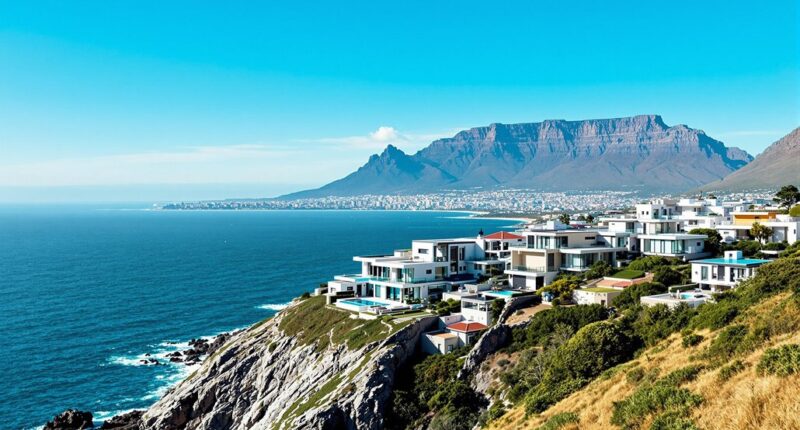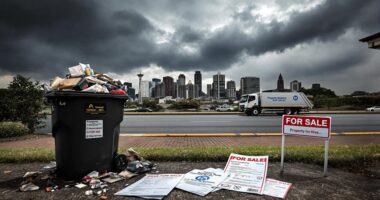Property prices in the Western Cape have surged dramatically, with the median home now costing R2.1 million. This price tag makes homeownership impossible for approximately half of South Africa’s population. Coastal areas like Elands Bay and Yzerfontein have seen price increases exceeding 200% over the past decade. Semigration from Gauteng and KwaZulu-Natal is fueling the competitive market. The growing gap between property values and average incomes highlights South Africa’s wealth inequality challenges.
While many South Africans struggle with the cost of living, coastal property prices in the Western Cape continue to soar at remarkable rates. The province has experienced extraordinary growth in home values over the past decade, creating a market that’s increasingly inaccessible to the average citizen. With the median house price now reaching R2.1 million in the Western Cape, approximately half of South Africa’s population simply can’t afford to buy property in the region.
Rising coastal property prices in the Western Cape reflect South Africa’s growing economic divide, leaving average citizens priced out of the market.
The coastal town of Elands Bay exemplifies this dramatic surge, with property values jumping an astonishing 213% over ten years. Average homes that sold for R400,000 in 2014 now command R1.25 million. Similarly impressive growth occurred in Yzerfontein, where prices climbed 196% from R1.25 million to R3.1 million during the same period.
Other Western Cape coastal communities show similar patterns. St Helena Bay and Paternoster recorded impressive gains of 107% and 106% respectively. These increases far outpace inflation and wage growth for most South Africans, widening the affordability gap.
The surge isn’t limited to modest properties. The luxury market reached record levels with extraordinary sales, including a R59.95 million property in Clifton and a R52 million home in Bishopscourt. These transactions highlight the presence of ultra-wealthy buyers in the province.
A key driver of this price escalation is semigration – the movement of people from other provinces to the Western Cape. Data from 2023 shows approximately 3,500 homeowners from Gauteng and 900 from KwaZulu-Natal relocated to the Western Cape. This influx represents substantial buying power entering an already competitive market. The 2024 market data confirms this trend is accelerating, with an astonishing 68% of semigrants choosing to relocate specifically to the Western Cape.
The nature of Western Cape property ownership has evolved beyond traditional holiday homes. Many buyers now seek primary residences, reflecting a broader wealth migration toward the province. This shift intensifies competition for available housing, pushing prices even higher.
Even within the Western Cape, internal migration is occurring as residents move between municipalities seeking more affordable options. This ripple effect spreads price inflation to formerly more accessible communities.
The R2.1 million median price point means mortgage payments far beyond what most South African households can manage. With standard lending requirements, buyers would need monthly household incomes exceeding R60,000 – placing these properties out of reach for approximately half the country’s population. The Pam Golding Residential Property Index shows the Western Cape continues to perform better than other regions in house price inflation, sustaining this affordability challenge.
As this trend continues, concerns grow about increasing economic segregation and limited access to the province’s opportunities and amenities. The Western Cape’s property market now symbolizes South Africa’s broader wealth inequality challenges, with coastal regions becoming exclusive enclaves for the financially privileged while average earners find themselves increasingly excluded from ownership opportunities in these desirable communities.
Conclusion
The R2.1 million average house price in the Western Cape remains unattainable for most South Africans. With median household incomes well below what’s needed for such mortgages, approximately half the country’s population can’t afford these properties. This housing reality highlights the economic divide affecting homeownership opportunities. As prices continue rising in desirable coastal regions, affordable housing remains a significant challenge for many citizens.








